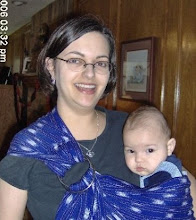In California and across the country, female prisoners are routinely shackled for most of labor and immediately after childbirth -- a longstanding practice opposed by a growing number of legislators and even a spokesman for the conservative guards union. A bill introduced by Assemblywoman Sally Lieber that would ban the practice has moved from the Assembly into the Senate.
...
The practice of shackling laboring inmates is defended by the state Department of Corrections and Rehabilitation, although there is no known record of an escape or assault by a prisoner giving birth. All inmates, male and female, who leave state institutions for community hospitals are shackled and guarded by at least one armed correctional officer. That includes the 185 female prisoners on average who give birth each year in California.
...
In general, the women ride to and from the hospital in handcuffs. Inside, they can be shackled to a bed during early labor, a critical period when walking and changing positions assists the progress and comfort of delivery. Per department policy, after giving birth, they have one leg shackled to the bed for the duration of their stay.
Callahan, a first-time offender from Merced, said the shackles were more than emotionally traumatic -- they made her physical recovery more difficult. "You have to be stuck to a bed even though the doctors say you need to get up and walk because your stomach was cut open," she said. "They uncuffed me because a doctor and a nurse had given direct orders for me to walk around."
Between 1998 and 2004, California prisoners gave birth to 1,300 babies, the majority conceived before their mothers' sentencing. Most of those babies went home with relatives or into foster care.
Pregnant inmates get extra milk with meals and the services of a "doula" -- a trained labor coach who runs weekly childbirth preparation classes and provides bedside support during delivery.
According to prison officials, hospital doctors decide when a patient is in "active labor," and that is when restraints are removed. But that stage is ill-defined.
"Active labor means contractions that are regular, forceful and coordinated, and that can go on for 36 hours," said Corey Weinstein, a correctional medical consultant who serves on the board of the San Francisco-based California Prison Focus. Women interviewed by advocacy groups report being restrained until the pushing stage, the last part of active labor, a practice Weinstein described as "barbaric."
Monday, August 01, 2005
Bill aims to limit inmate shackling
If I try to comment on this news item, I'll get really angry. So I'll just quote a little:
Subscribe to:
Post Comments (Atom)




No comments:
Post a Comment